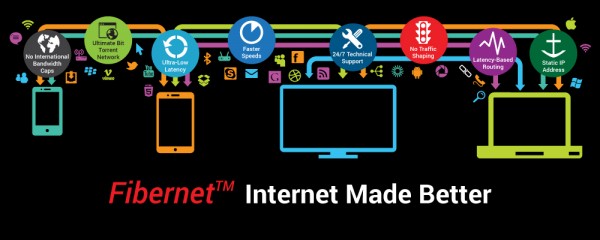
Brought to you by ViewQwest
If you are merely going online for news or e-mail, the experience offered by a fast fibre broadband service versus a “regular” low-cost one might not be dramatically clear. Big deal if an e-mail message came in a split second slower, right?
Well, that split-second difference is critical, say, in games. See your opponent a moment later and you’re killed in the game. Similarly, if you transfer lots of files, say, to and from clients, you want a service that provides huge amounts of bandwidth, all times of the day.
These are the things that users have to think about when signing on the dotted line for a two-year contract.
How do you know you are getting what you paid for? Do the things you’d regularly do online, from playing games to downloading files. But before you start, connect your PC to the router via a network cable – Wi-Fi can be patchy at home and could affect results.
Download speed
There are many ways to test how fast files get downloaded. BitTorrent, the popular peer-to-peer technology, is often the first thing people start with. Note that the results can vary, for example, with the number of people sharing a file.
There are other sources, of course. One of them should be Dropbox if you are a frequent user. Here you should test both your download and upload speeds by simply transferring some files over and back.
If you buy many of your games online, make sure the download speeds are fast with the servers you often use. Some, like Electronic Arts, have their content cached here, so a download of the latest game as it releases, say Battlefield 4, will max out many fibre broadband plans’ bandwidth. That means a 20GB game in 15 minutes or less.
Latency (on game servers)
Besides the bandwidth to download files, you should also look for low latency connections, in particular, to the game servers you frequent.
Having a big pipe is one thing, to have the “water” flowing through at a fast pace – consistently – is another important factor in determining the quality of a service.
How do you test this? Log in to your favourite game servers to see how well you link up. The popular role-playing game, Diablo 3, for example, will show you the latency when you sign on. As you play, you can also monitor the connection.
Obviously, lower latency is better. This way, you don’t get jerky movements in the game and you don’t miss a beat when slashing away at dozens of monsters online.
Depending on the game you play, different levels of latency can be tolerated. Go to your favourite servers and see how your broadband link connects.
Video streaming
Let’s not forget video streaming as well. The obvious place to start is YouTube. To see how well your broadband service connects, fire up a Full HD (1080p) video and see if there is any stuttering or annoying buffering in the middle of a video.
Better yet, check out some 4K videos, if you have a 4K monitor or TV at home. Because the resolution is four times higher than Full HD, these videos are a lot more demanding on the broadband link you have.
If you have an existing Netflix account, sign in and see how well a 4K show streams. The drama series, House of Cards, is the first to show this off, and it will take a very good broadband link to stream seamlessly from servers in the United States.
What should you look out for? Besides checking whether the stream is smooth, see if your Netflix app has to downscale things to Full HD or other lower resolutions. If your service provider doesn’t support 4K streaming, it might put a speed bump on things and force Netflix to stream videos that are less sharp.
Test what you use
Ultimately, test a broadband service with what you would use often. Tools such as Speedtest which connects to several pre-determined sites, are often used as a fast way to compare services, but the numbers are useless unless these sites are where you spend most of your time online.
What you want is a service provider that doesn’t shape its traffic to hold you back, no matter what you do. One that does not cap or “de-prioritise” your Internet downloads.
Good news is, it is easy to test out your actual usage experience these days. Only then will you be able to know whether the top speed you see on a brochure actually applies in real life. This way, you sieve out the real deals from the empty promises.
Got any way to test your broadband speed? Interested to see how fast your service provider really is? Test it out yourself or look up its user forums for feedback.





